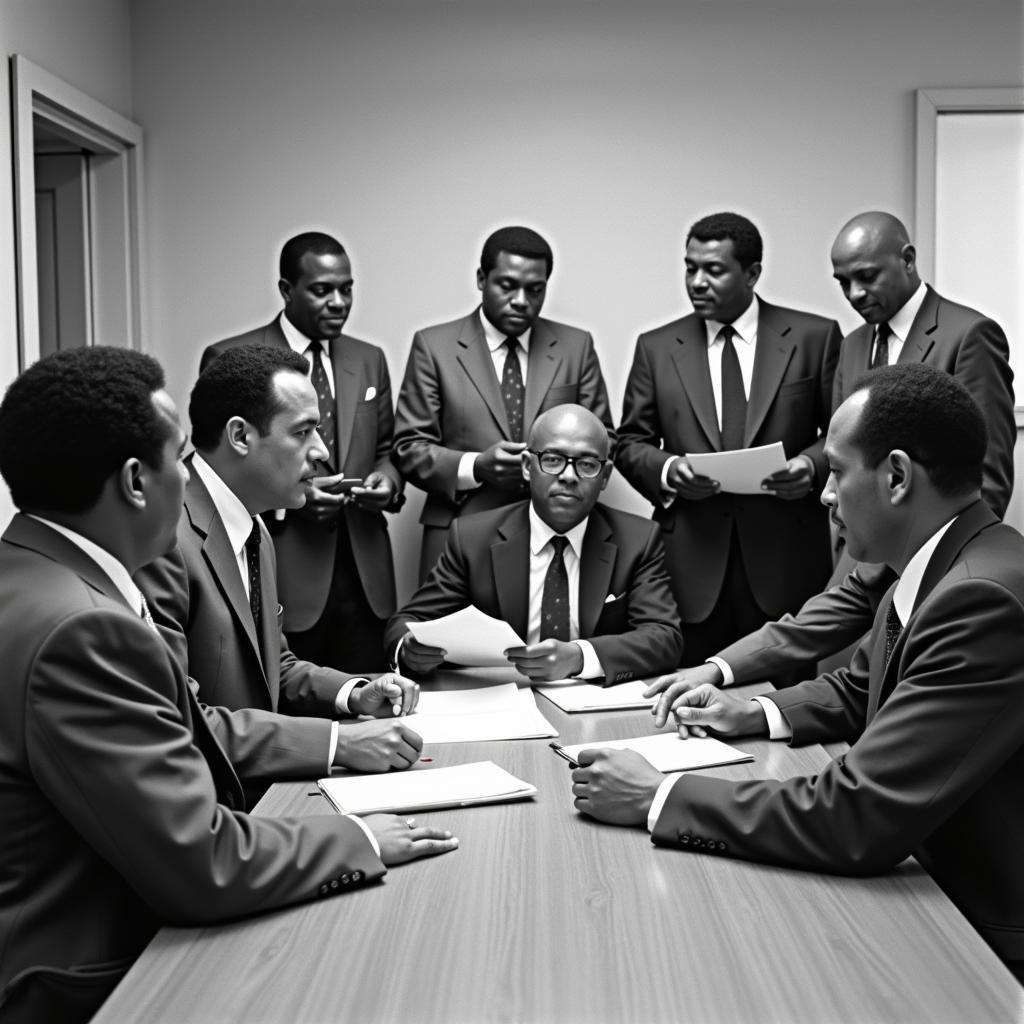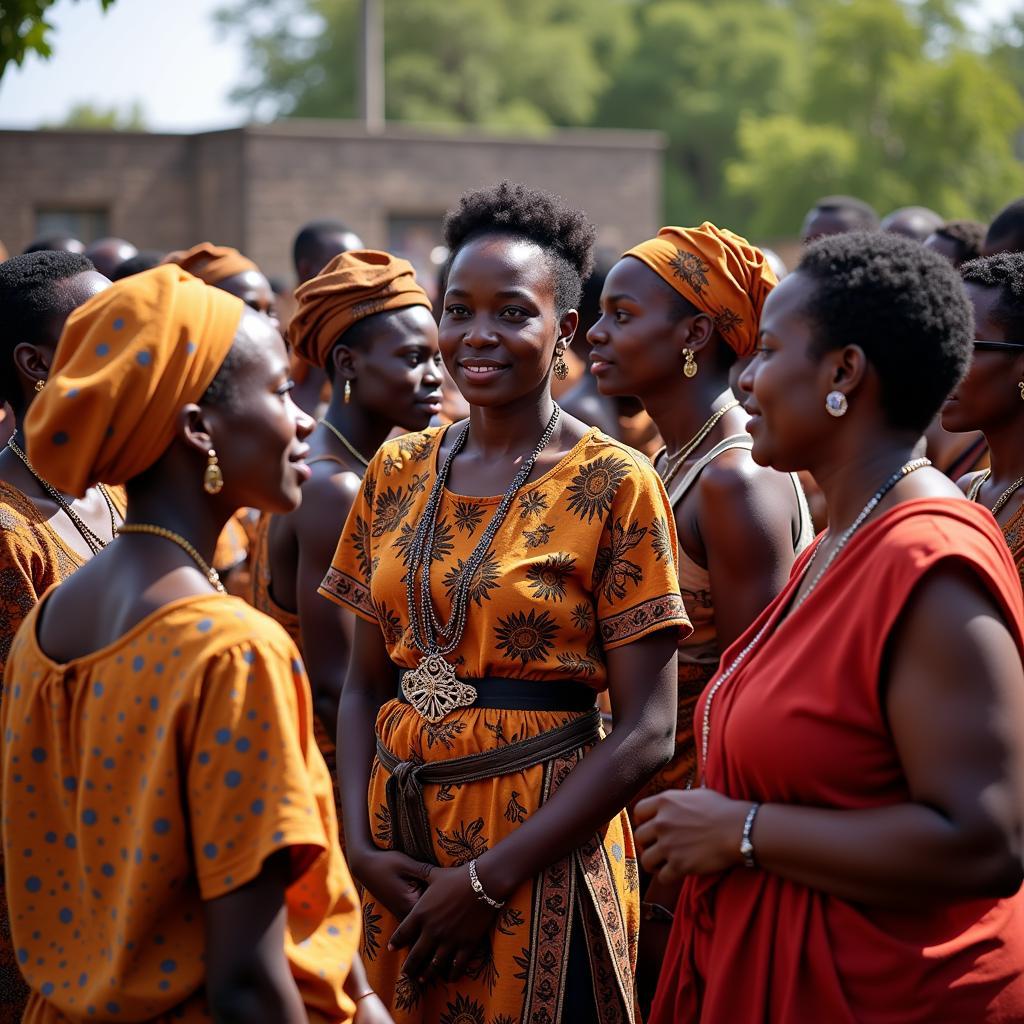Navigating the African Development Landscape: Understanding the African Development Bank President
The African Development Bank (AfDB) plays a crucial role in fostering sustainable economic growth and social progress across the African continent. At the helm of this influential institution is the African Development Bank President, a position that carries immense responsibility and influence.
The Mandate of the African Development Bank President
The African Development Bank President serves as the chief executive officer of the AfDB Group, overseeing its strategic direction and operations. The President is elected by the Board of Governors, comprising representatives from the Bank’s 54 African member countries and 27 non-regional member countries. The President’s mandate is multifaceted and encompasses various critical areas:
- Strategic Leadership: The President sets the Bank’s overall vision and strategy, aligning it with the development priorities of African nations. This involves identifying key areas for intervention, formulating impactful programs, and mobilizing resources to support these initiatives.
- Policy Formulation and Implementation: The President leads the Bank’s efforts in developing and implementing sound economic and development policies across Africa. This includes providing technical expertise, policy advice, and financial support to member countries to promote economic diversification, regional integration, and poverty reduction.
- Resource Mobilization: A key function of the President is to secure funding for the Bank’s operations. This involves engaging with donor countries, international financial institutions, and private sector investors to attract investments and concessional loans for development projects across the continent.
- Representation and Advocacy: The African Development Bank President acts as a powerful advocate for Africa on the global stage, representing the continent’s interests in international forums and advocating for increased development assistance and fairer trade practices.
- Partnership Building: The President fosters strong partnerships with governments, civil society organizations, the private sector, and other development partners to ensure a coordinated and collaborative approach to African development.
Navigating Challenges and Seizing Opportunities
The African Development Bank President faces a complex and ever-evolving landscape characterized by both challenges and opportunities.
Challenges:
- Poverty and Inequality: Despite significant progress, poverty and income inequality remain persistent challenges in many African countries. The President must prioritize initiatives that address these issues, focusing on inclusive growth and social protection programs.
- Climate Change: Africa is particularly vulnerable to the impacts of climate change, which threatens food security, water resources, and human health. The President needs to spearhead efforts to promote climate-resilient development and support African countries in adapting to the effects of climate change.
- Infrastructure Gap: Inadequate infrastructure, including roads, energy, and telecommunications, hinders economic growth and development in Africa. The President must prioritize investments in infrastructure development to unlock the continent’s potential.
- Conflict and Instability: Conflicts and political instability in some African countries can derail development progress. The President needs to work closely with member countries and regional organizations to promote peace, security, and good governance.
Opportunities:
- Demographic Dividend: Africa has the world’s youngest population, presenting a unique opportunity for economic growth if investments are made in education, healthcare, and job creation. The President should leverage this demographic dividend to drive Africa’s transformation.
- Technological Advancements: Technological advancements, particularly in areas such as mobile technology, renewable energy, and digitalization, offer significant opportunities for leapfrogging traditional development models. The President should embrace innovation and support the development of a robust digital economy in Africa.
- Regional Integration: Increased regional integration can boost trade, investment, and economic growth across the continent. The President should promote the implementation of the African Continental Free Trade Area (AfCFTA) and other regional integration initiatives.
The African Development Bank Presidents: A Legacy of Leadership
Over the years, the African Development Bank has been led by a succession of visionary leaders who have played instrumental roles in shaping the Bank’s agenda and contributing to Africa’s development progress. These individuals have brought a wealth of experience, expertise, and commitment to the position. You can learn more about their contributions by reading about African Development Bank Presidents.
The current African Development Bank President is Dr. Akinwumi Adesina, who assumed office in September 2015 and was re-elected for a second five-year term in 2020. Dr. Adesina, a renowned development economist from Nigeria, has brought a strong focus on agriculture, infrastructure development, and private sector engagement to the Bank’s operations.
Under his leadership, the Bank has launched several transformative initiatives, including the High 5 agenda, which focuses on five key areas: Light up and power Africa, Feed Africa, Industrialize Africa, Integrate Africa, and Improve the quality of life for the people of Africa. The Bank has also played a crucial role in responding to the COVID-19 pandemic in Africa, providing financial and technical support to member countries.
The Future of the African Development Bank
The African Development Bank is poised to play an even more critical role in the years to come as Africa navigates a rapidly changing global landscape. The Bank’s ability to adapt to new challenges, seize emerging opportunities, and effectively leverage its resources will be paramount to its success. The future African Development Bank President will need to be a visionary leader with a deep understanding of the continent’s development challenges and opportunities, a strong commitment to good governance and accountability, and the ability to mobilize resources and build partnerships to drive Africa’s transformation.
Conclusion
The African Development Bank President plays a vital role in shaping the development trajectory of the African continent. By providing strategic leadership, promoting sound economic policies, mobilizing resources, advocating for Africa’s interests, and fostering strong partnerships, the President can contribute significantly to achieving sustainable and inclusive growth across Africa. As the continent continues to face complex challenges and seize transformative opportunities, the leadership of the African Development Bank President will be more critical than ever before.
FAQs
1. What is the role of the African Development Bank Board of Governors?
The Board of Governors is the highest decision-making body of the African Development Bank. It comprises representatives from the Bank’s 81 member countries. The Board of Governors meets annually to review the Bank’s operations, approve its budget, and elect the Bank’s President. You can learn more about the Board by referencing the African Development Bank Board of Governors PDF.
2. How does the African Development Bank support private sector development in Africa?
The African Development Bank recognizes the crucial role of the private sector in driving economic growth and job creation in Africa. The Bank provides a range of financial products and services to support private sector development, including direct lending, equity investments, guarantees, and technical assistance.
3. How can I get involved with the African Development Bank?
The African Development Bank offers various opportunities for individuals and organizations to get involved in its work. You can explore career opportunities, apply for internships, or partner with the Bank on development projects.
4. What are the African Development Bank’s priorities for the future?
The African Development Bank’s priorities for the future are outlined in its Ten-Year Strategy (2013-2022) and its High 5 agenda. The Bank will continue to focus on areas such as infrastructure development, agriculture, climate change, private sector development, and human capital development.
5. What are the qualifications required to become the African Development Bank President?
Candidates for the position of African Development Bank President must have extensive experience in economic development and finance, as well as a deep understanding of the African continent. They must also possess strong leadership skills, a proven track record of success, and a commitment to the Bank’s mission.
6. Who are the African Development Bank shareholders?
The African Development Bank shareholders are comprised of 54 African countries and 27 non-regional member countries.
7. How does the African Development Bank contribute to regional integration in Africa?
The African Development Bank plays a critical role in promoting regional integration in Africa by financing infrastructure projects that connect countries, supporting the development of regional markets, and promoting policy harmonization. For example, did you know that Accra is the capital of which West African country? This is just one example of the many countries the African Development Bank works with.
Do you need support? Please contact us at:
Phone Number: +255768904061
Email: kaka.mag@gmail.com
Address: Mbarali DC Mawindi, Kangaga, Tanzania
We have a 24/7 customer support team ready to assist you.

